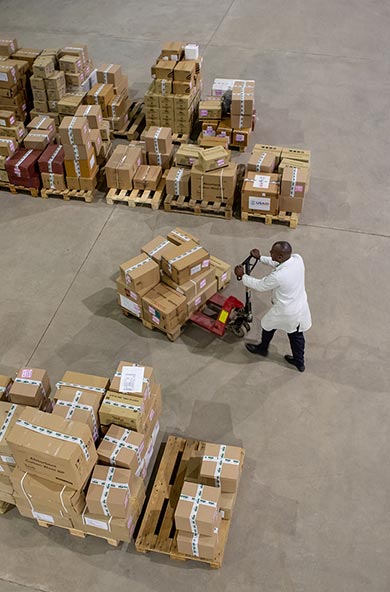From green bonds to nature-based solutions, finance finds growth in sustainability
How planetary risk is transforming world finance
January 2, 2025

Planetary health and financial stability are how deeply interconnected. Transforming global finance is no longer optional — it is essential.
- Integrating sustainability into financial systems is essential for mitigating systemic risks, as environmental crises increasingly threaten financial stability and economic resilience
- Robust internal processes and decision-making frameworks must support sustainability disclosures, ensuring they lead to actionable outcomes rather than superficial reporting
- Financial institutions can seize growth opportunities by innovating products like green bonds and sustainability-linked loans, aligning investments with nature-based solutions and sustainability goals
As we enter 2025, the global financial sector stands at a pivotal moment. In the wake of three major UN Conferences of the Parties on biodiversity, climate and desertification, one truth has become indisputable: transforming global finance is no longer optional — it’s essential. These conferences have shown how deeply interconnected planetary health and financial stability are, underscoring the urgent need for public and private sectors to respond.
At COP16 on biodiversity in Colombia, COP29 on climate in Azerbaijan, and COP16 on desertification in Saudi Arabia, leading global financial institutions participated in discussions that highlighted the critical role of private capital in tackling interconnected global challenges.
These conferences demonstrated how biodiversity loss, climate change and land degradation threaten financial stability and underscored the urgency of embedding sustainability into investment and risk management frameworks to ensure long-term economic resilience.
The scale of the challenge is immense: according to the UN Environment Programme, global investment in nature must quadruple by 2050, with over US$536 billion needed annually to tackle biodiversity, climate and land degradation crises. As ecosystems collapse and natural resources diminish, the cascading effects threaten everything from commodity prices to sovereign debt ratings.
Frameworks like the Taskforce on Nature-related Financial Disclosures and the Taskforce on Inequality and Social-related Financial Disclosures are essential. However, disclosure alone will not bring the systemic changes needed.
For disclosures to be impactful, the underlying data and internal processes must be robust and high quality. Financial institutions must integrate nature, climate and land risks into business models and decision-making processes. This approach will not only better manage risks but also embed sustainability at the core of financial systems.
Beyond disclosure
Effective impact management is not just about measuring risks — it’s about acting on them. At UNDP, we’ve seen how superficial reporting can create an illusion of progress while deeper systemic risks remain unaddressed. Disclosure frameworks must be paired with robust internal systems that prioritize sustainability. Without this, disclosure becomes a mere box-ticking exercise.
"As ecosystems collapse and natural resources diminish, the cascading effects threaten everything from commodity prices to sovereign debt ratings."
That’s why UNDP and the International Organization for Standardization launched the Guidelines for the Sustainable Development Goals. These provide businesses with tools to embed sustainability into core operations, turning ambitious targets into measurable outcomes.
Private sector players, including banks and investors, must integrate sustainability into their DNA — embedding it into risk frameworks, product development and client strategies. Without these internal shifts, external reporting will fail to mitigate environmental risks.
Turning risk into opportunity
For financial institutions that embrace this transformation, the rewards are significant. Green bonds have surpassed $1 trillion in annual issuance, showing the financial viability of sustainability-focused products. Nature-based solutions — such as forest conservation and land restoration — are gaining traction as investment opportunities, offering both environmental and financial returns.
Similarly, sustainability-linked loans are transforming corporate finance by tying interest rates to environmental performance.
At UNDP, we support these innovations by providing tools to help institutions align their investments with sustainability goals. The SDG Investor Platform offers market intelligence on opportunities like renewable energy and biodiversity conservation, where financial institutions can achieve both returns and positive environmental impact.
These innovations show that sustainability is not only about managing risk — it’s about seizing new opportunities. Financial institutions that innovate will not only protect their balance sheets but also access new growth markets in an increasingly sustainability-driven economy.

Land degradation, biodiversity loss and climate change threaten financial stability and underscore the urgency of embedding sustainability into investment and risk management frameworks.
Financial transformation
The path forward for financial institutions is clear.
First, build internal systems to measure and manage environmental and social impacts — essential for mitigating long-term risks.
Second, integrate sustainability metrics into core risk frameworks, ensuring environmental factors guide decisions.
Finally, innovate financial products, such as green bonds and nature-based solutions, to channel capital toward sustainable outcomes.
As global leaders gather for the World Economic Forum’s annual meetings in Davos in January, financial institutions stand at a turning point. The tools are in place, the business case is proven, and the consequences of inaction are undeniable.
The future of finance belongs to those who turn environmental and social challenges into opportunities. The question is not if finance will transform — but who will lead the way. Those who act now will not only safeguard their balance sheets but will also seize the immense possibilities of a sustainable, resilient global economy.
UNDP is committed to helping financial leaders navigate this transformation, providing guidance, frameworks and insights to drive the bold, transformative leadership that is needed today.
This article was first published online by The Banker and will appear in its January print edition. It is republished here by UNDP with permission.

 Locations
Locations























